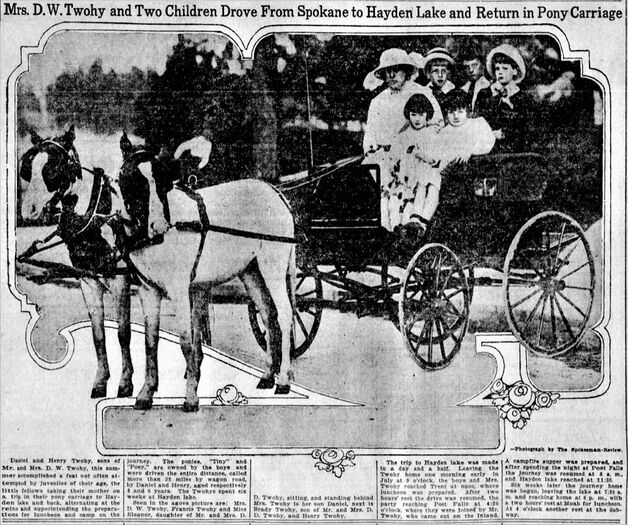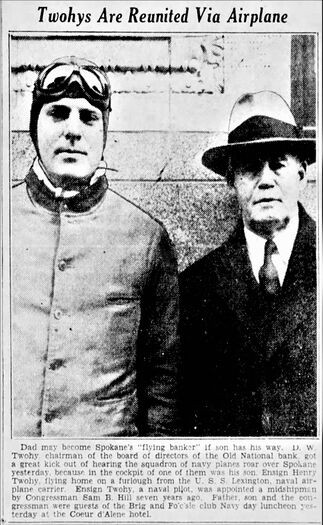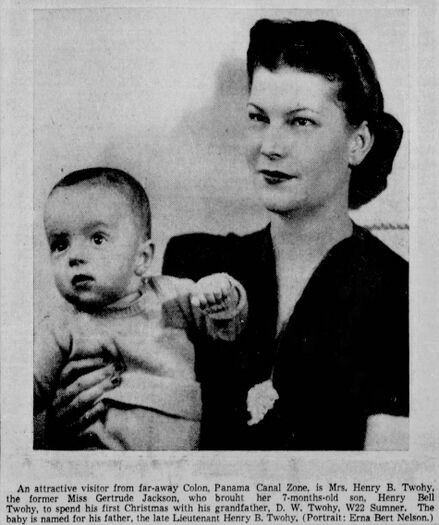HENRY B. TWOHY, LT, USN
Henry Twohy '29
Lucky Bag
From the 1929 Lucky Bag:
HENRY BELL TWOHY
Spokane, Washington
"Hank" "Hassim" "Hock"
HENRY TWOHY, the spirit of everlasting rebellion and Irish wit. If there is a project afloat, be it ever so hazardous, you will always find Hank at the bottom of it an instigator of all campaigns that border on the pale. Mention anything under the sun from whippet races in Tia Juana to the outcome of the next election, and he is there with an almost flawless solution, because intelligence happens to be one of his many attributes. Add to this a boundless supply of energy, a wild Celtic temperament that was nurtured and thrived among the progressive atmosphere of the Far West, and you have possibly the most romantic figure at the Academy portrayed for you.
Perhaps he has not found all he anticipated but he has certainly had his share of adventure in the past few years. Being an inherent daredevil with the prowess of a Napoleon, he causes many to forsake Dame Reason to pursue some fleeting will-o-the-wisp, but usually his foresight and judgment are sufficient to turn defeat into glorious victory in every endeavor. In the near future he expects to follow the lure of the great outside, and some day, perhaps, be presented to the Court of Saint James, or to die in the attempt to swim the Hellespont.
Black N*****. Football B-Squad 1929 3, 2. Water Polo 4, 1929, wNAp 3, wNp 2, N 1, Captain 1. 1 P.O.
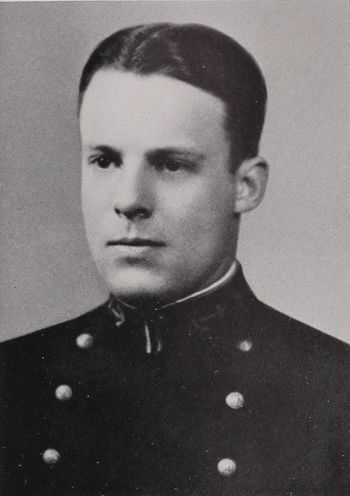
HENRY BELL TWOHY
Spokane, Washington
"Hank" "Hassim" "Hock"
HENRY TWOHY, the spirit of everlasting rebellion and Irish wit. If there is a project afloat, be it ever so hazardous, you will always find Hank at the bottom of it an instigator of all campaigns that border on the pale. Mention anything under the sun from whippet races in Tia Juana to the outcome of the next election, and he is there with an almost flawless solution, because intelligence happens to be one of his many attributes. Add to this a boundless supply of energy, a wild Celtic temperament that was nurtured and thrived among the progressive atmosphere of the Far West, and you have possibly the most romantic figure at the Academy portrayed for you.
Perhaps he has not found all he anticipated but he has certainly had his share of adventure in the past few years. Being an inherent daredevil with the prowess of a Napoleon, he causes many to forsake Dame Reason to pursue some fleeting will-o-the-wisp, but usually his foresight and judgment are sufficient to turn defeat into glorious victory in every endeavor. In the near future he expects to follow the lure of the great outside, and some day, perhaps, be presented to the Court of Saint James, or to die in the attempt to swim the Hellespont.
Black N*****. Football B-Squad 1929 3, 2. Water Polo 4, 1929, wNAp 3, wNp 2, N 1, Captain 1. 1 P.O.
Loss
Henry was lost on November 3, 1937 when the bomber he was piloting collided with a smaller aircraft and crashed in Washington.
Other Information
From History Link:
On November 3, 1937, a Navy bomber and a Navy pursuit plane collide over Boeing Field during gunnery maneuvers. The two men in the pursuit plane parachute to safety, but all five men aboard the bomber perish as the planes crash into a cow pasture south of the runway. The five crash victims are Lieutenant Henry Twohy, Aviation Cadet Kenneth Rhuddy, Aviation Cadet Kenneth Schmidt, Aviation Machinist’s Mate First Class Matthew McCroddan, and Radioman First Class Russell Reagan. At the time, this is the largest aviation disaster to occur locally.
A Day Like Any Other…
It was a partly cloudy day, perfect for gunnery maneuvers. The planes were equipped with camera guns, which mimicked machine guns, but instead took a rapid succession of still photographs for later review. The two-winged bomber, a PM-2 type, “patrolled” the skies at 90 m.p.h., and two open-cockpit pursuit planes (Berliner-Joyce OJ-2's) took turns diving out of the clouds in simulated combat 3,500 feet off the ground.
Maneuvers of this type were common, but on this day something went horribly wrong. After about 15 “attack” dives at speeds of over 150 m.p.h., one of the pursuit planes came out of the clouds a bit too close to the bomber, with little time for evasion on the part of both pilots. The right wing of the smaller plane connected with the right wing of the bomber, crippling both planes.
…Ends in Tragedy
Aviation Chief Machinist’s Mate J. D. Goodsell and Seaman W. S. Bowman jumped from the damaged pursuit plane, although some witnesses on the ground seemed to think that they were thrown out on impact. The two men parachuted down, almost in shock, as their plane drilled itself into the ground below.
The bomber limped along for a few seconds, but then its wing collapsed, sending the craft into a violent tailspin. Its engines racing, the plane plummeted towards the ground. At some point Twohy, the pilot, was able to cut the motors, preventing a fire upon impact. None of the crew was able to escape the plane before it pancaked into the field, strewing gasoline-soaked wreckage over most of an acre.
It took hours to extricate the bodies from the wreckage. The men had been clutching their parachutes upon impact, unable to use them as they tumbled through the sky. The chutes, meant to save their lives, were instead used as shrouds to transport the dead men away from the crash site.
Shattered Lives
… Gertrude Twohy was at home making preparations for her and her husband’s “semi-anniversary.” They had been married exactly six months ago, to the day. As she busied herself in their apartment, waiting for her handsome aviator husband to arrive home from Sand Point Naval Base, she turned on the radio, only to hear that her husband had perished in the crash along with four other men.…
An Unfortunate Accident
Although there were multiple witnesses to the accident, both on the ground and in the air, no clear consensus was arrived at for the cause of the crash. Many witnesses claimed to see a wing fall off one of the planes prior to impact, but the wreckage did not confirm this. The pilot of the wrecked pursuit plane felt that his plane had collapsed before impact, but the pilot of the other pursuit plane witnessed no structural damage to either plane before the crash.
The Navy produced records showing that both aircraft were fit for duty, and their investigative panel also concluded that neither pilot was negligent. It was hoped that the camera on board the plane would provide clues, but most of the film was ruined upon impact. In the end, the Navy determined that the crash was an unavoidable accident, and nothing more.
From The Spokesman-Review, Spokane, Washington, November 14, 1937:
[After attending a funeral for Mrs. Gordon Lamey] . . . many of the same friends, young and older, sorrowfully wended their way to St. Augustine’s church for a second sad mission – to pay respects to Lieutenant Henry Twohy, United States navy, second of D. W. Twohy’s four sons, for whom requiem mass was chanted. It was a deeply moving beautiful service, that may be summed up in the prayer, “Lord, givest thou thy servant peace now and forever.”
Black-robed sisters, who had been his teachers in St. Augustine’s school before he went to Gonzaga, thence to Annapolis, and priests from Gonzaga, took part in the service. Dan Twohy and his wife, also Mrs. Edgar Breene, cousin of Henry Twohy, came from Seattle to join numerous relatives here, and Mrs. Jackson, mother of Mrs. Henry Twohy, had come from the Canal zone to be with her daughter.
At Fairmount, where Lieutenant Twohy now rests beside his mother, Charles Finucane and Dr. M. M. Kalez, both wearing uniforms of the naval reserve, folded the American flag that had covered the coffin, and handed it to the widow. Just before “taps,” the eight pall bearers, all of whom had been childhood friends of Henry Twohy . . . placed on the coffin the red rosebuds that had been worn on their coat lapels. It was a simple gesture of bidding farewell to a young man whose courage and high principles now list him as one of his country’s heroes, that had accorded him its highest tribute of military honors.
From researcher Kathy Franz:
Henry graduated from Gonzaga high school in 1922. He and his brother Daniel won distinctions in Physics and French.
In early 1924, Henry was on the business committee for the Gonzaga University’s Passion Play “Golgotha.” The play was performed at the American Theater, and Henry had the role of Jonas. In January 1925, Henry was manager and member of the basketball team, the Gonzaga All-Stars. He also served on the junior prom committee, and he graduated in 1926.
Congressman Sam B. Hill appointed Henry to the Naval Academy in May, 1925.
Henry’s mother died in March, 1927, and he attended her funeral dressed in his military academy uniform.
He married Gertrude Jackson on May 8, 1936, at her home in Colon, Panama Canal Zone. They returned to Spokane for a visit in the fall of 1937 after returning from a naval flight to Alaska.
Per the Spokane Chronicle, November 3, 1937: Henry won a citation for bravery four years ago when he risked his life to land off Pensacola, Fla., and rescued two fellow navy flyers whose plane had crashed at sea. In recognition of this feat and his flying record, he was one of two naval officers selected two years ago to represent the United States flying corps on a world good will tour. It was during this battleship trip that he met Miss Gertrude Jackson in Panama.
Henry’s wife Gertrude, born 1916 in the Canal Zone, became Captain Lyle Lawrence Koepke’s (’29) third wife on March 17, 1946. They had two daughters, Gertrude and Taffy. She survived Lyle who died in 1982 in Panama.
Henry’s son Henry was born on May 24, 1938, in Panama. He attended Wentworth Military Academy and married Carolyn L. Holgerson in Ancon, Canal Zone, in March 1969. They boarded the Arcadia for a three-month, around the world wedding trip. In 1986, he was president of the Pacific Residents Advisory Committee in Panama.
Henry’s father Daniel W. was a pioneer Spokane banker who was chairman of the board of the Old National Bank and Union Trust company. Henry’s mother was Sue (Bell,) and his brothers were Daniel, Frank and John.
Henry’s father and brothers attended his Naval Academy graduation in June, 1929. Per the Spokane Chronicle, June 16, 1929 (four months before the Wall Street crash on October 29), Henry’s father said: “Those who have to do with the Federal Reserve banks still think there is too much of the nation’s credit invested in securities, which is liable to make a shortage in the needs of industry and commerce. It is thought that cooperation, which is being brought about by the powerful banks of the country, will gradually rectify this situation so that the business of the country may be cared for without interruption. . . . On my return to Spokane, I am glad to find that crop prospects have improved and that if the farmer can get any fair price for his 1929 crop I believe the Inland Empire will continue to be reasonably prosperous. The Old National Bank and Union Trust company expects to do its share in taking care of the seasonal requirements not only of the farming districts but of business activities generally.”
Henry is buried in Washington. In addition to his wife, he was survived by his father and two brothers.
Photographs
The "Register of Commissioned and Warrant Officers of the United States Navy and Marine Corps" was published annually from 1815 through at least the 1970s; it provided rank, command or station, and occasionally billet until the beginning of World War II when command/station was no longer included. Scanned copies were reviewed and data entered from the mid-1840s through 1922, when more-frequent Navy Directories were available.
The Navy Directory was a publication that provided information on the command, billet, and rank of every active and retired naval officer. Single editions have been found online from January 1915 and March 1918, and then from three to six editions per year from 1923 through 1940; the final edition is from April 1941.
The entries in both series of documents are sometimes cryptic and confusing. They are often inconsistent, even within an edition, with the name of commands; this is especially true for aviation squadrons in the 1920s and early 1930s.
Alumni listed at the same command may or may not have had significant interactions; they could have shared a stateroom or workspace, stood many hours of watch together, or, especially at the larger commands, they might not have known each other at all. The information provides the opportunity to draw connections that are otherwise invisible, though, and gives a fuller view of the professional experiences of these alumni in Memorial Hall.
July 1929
LT Thomas Fisher '18 (Light Bombing Plane Squadron (VB) 2B)
LT Paul Thompson '19 (Aircraft Squadrons, Battle Fleet)
LTjg Creighton Lankford '25 (Fighting Plane Squadron (VF) 1B)
October 1929
LT Thomas Fisher '18 (Light Bombing Plane Squadron (VB) 2B)
LTjg Creighton Lankford '25 (Fighting Plane Squadron (VF) 1B)
January 1930
LT Thomas Fisher '18 (Light Bombing Plane Squadron (VB) 2B)
LTjg Walter Leach, Jr. '24 (Light Bombing Plane Squadron (VB) 2B)
LTjg Hubert Waters '25 (Aircraft Squadrons, Battle Fleet)
LTjg Creighton Lankford '25 (Fighting Plane Squadron (VF) 1B)
LTjg Charles Signer '26 (Torpedo and Bombing Plane Squadron (VT) 2B)
ENS Loren Morris '27 (Aircraft Squadrons, Battle Fleet)
ENS Robert Winters '27 (Aircraft Squadrons, Battle Fleet)
ENS John Eldridge, Jr. '27 (Aircraft Squadrons, Battle Fleet)
ENS Eugene Lindsey '27 (Aircraft Squadrons, Battle Fleet)
ENS Julian Greer '27 (Aircraft Squadrons, Battle Fleet)
April 1930
LTjg Walter Leach, Jr. '24 (Light Bombing Plane Squadron (VB) 2B)
LTjg Creighton Lankford '25 (Fighting Plane Squadron (VF) 1B)
LTjg Carlton Hutchins '26 (Light Bombing Plane Squadron (VB) 2B)
LTjg Claude Haman '26 (Scouting Plane Squadron (VS) 2B)
ENS John Eldridge, Jr. '27 (Scouting Plane Squadron (VS) 2B)
ENS Julian Greer '27 (Light Bombing Plane Squadron (VB) 2B)
October 1930
LT Paul Thompson '19
LT Irving Wiltsie '21
LTjg Matthias Marple, Jr. '23
LTjg Robert Larson '24
LTjg James McDonough '24
LTjg John Waldron '24
LTjg Charles McDonald '24
LTjg Richard Moss '24
January 1931
LT Paul Thompson '19
LT Irving Wiltsie '21
LTjg Matthias Marple, Jr. '23
LTjg Robert Larson '24
LTjg James McDonough '24
LTjg John Waldron '24
LTjg Charles McDonald '24
LTjg Richard Moss '24
LTjg John Duke '26
April 1931
LT Irving Wiltsie '21
LTjg Matthias Marple, Jr. '23
LTjg Robert Larson '24
LTjg James McDonough '24
LTjg John Waldron '24
LTjg Charles McDonald '24
LTjg Richard Moss '24
LTjg John Duke '26
LTjg James Averill '27
LTjg William Potts '27
July 1931
LT Irving Wiltsie '21
LTjg Matthias Marple, Jr. '23
LTjg Robert Larson '24
LTjg James McDonough '24
LTjg Charles McDonald '24
LTjg Richard Moss '24
LTjg Carlton Hutchins '26
LTjg Charles Signer '26
LTjg John Duke '26
LTjg William Potts '27
October 1931
LT James Carney '21 (Fighting Plane Squadron (VF) 2B)
LT Edwin Crouch '21 (USS Lexington)
LTjg John Waldron '24 (Scouting Plane Squadron (VS) 3B)
LTjg Richard Downer '27 (Scouting Plane Squadron (VS) 3B)
LTjg Harold Richards '27 (USS Lexington)
LTjg Elmer Cooper '27 (Torpedo and Bombing Plane Squadron (VT) 1B)
LTjg Robert Winters '27 (Torpedo and Bombing Plane Squadron (VT) 1B)
LTjg Eugene Lindsey '27 (USS Lexington)
ENS John Yoho '29 (Scouting Plane Squadron (VS) 3B)
ENS Baylies Clark '30 (USS Lexington)
ENS John Craig '30 (USS Lexington)
ENS Cleon Felton '31 (USS Lexington)
ENS Walter Bailey '31 (USS Lexington)
ENS Edward Allen '31 (USS Lexington)
ENS Eugene Lytle, Jr. '31 (USS Lexington)
January 1932
LT James Carney '21 (Fighting Plane Squadron (VF) 2B)
LT Edwin Crouch '21 (USS Lexington)
LTjg John Waldron '24 (Scouting Plane Squadron (VS) 3B)
1LT Donald Willis '24 (Scouting Squadron 15-M)
LTjg Richard Downer '27 (Scouting Plane Squadron (VS) 3B)
LTjg Elmer Cooper '27 (Torpedo and Bombing Plane Squadron (VT) 1B)
LTjg Robert Winters '27 (Torpedo and Bombing Plane Squadron (VT) 1B)
LTjg Eugene Lindsey '27 (USS Lexington)
ENS John Yoho '29 (Scouting Plane Squadron (VS) 3B)
ENS Baylies Clark '30 (USS Lexington)
ENS John Craig '30 (USS Lexington)
ENS Cleon Felton '31 (USS Lexington)
ENS Walter Bailey '31 (USS Lexington)
ENS Edward Allen '31 (USS Lexington)
ENS Eugene Lytle, Jr. '31 (USS Lexington)
April 1932
LT James Carney '21 (Fighting Plane Squadron (VF) 2B)
LT Edwin Crouch '21 (USS Lexington)
LTjg John Waldron '24 (Scouting Plane Squadron (VS) 3B)
1LT Donald Willis '24 (Scouting Squadron 15-M)
LTjg Richard Downer '27 (Scouting Plane Squadron (VS) 3B)
LTjg Elmer Cooper '27 (Torpedo and Bombing Plane Squadron (VT) 1B)
LTjg Robert Winters '27 (Torpedo and Bombing Plane Squadron (VT) 1B)
LTjg John Riggs, Jr. '28 (Torpedo and Bombing Plane Squadron (VT) 1B)
ENS John Yoho '29 (Scouting Plane Squadron (VS) 3B)
ENS Baylies Clark '30 (USS Lexington)
ENS John Craig '30 (USS Lexington)
ENS Walter Bailey '31 (USS Lexington)
ENS Eugene Lytle, Jr. '31 (USS Lexington)
October 1932
LT William Sample '19 (Aircraft Squadrons)
LT Harry Brandenburger '21 (USS Lexington)
LT Edwin Crouch '21 (USS Lexington)
LT John Jones '21 (Aircraft Squadrons)
LT William Ault '22 (Torpedo and Bombing Squadron (VT) 1S)
LTjg Eugene Lindsey '27 (USS Lexington)
ENS John Yoho '29 (Scouting Plane Squadron (VS) 3S)
ENS Lance Massey '30 (Scouting Plane Squadron (VS) 3S)
ENS Walter Bailey '31 (USS Lexington)
ENS Eugene Lytle, Jr. '31 (USS Lexington)
ENS John Fairbanks, Jr. '32 (USS Lexington)
ENS Daniel Gothie '32 (USS Lexington)
ENS Albert Major, Jr. '32 (USS Lexington)
ENS William Thorn '32 (USS Lexington)
January 1933
LT William Sample '19 (Aircraft Squadrons)
LT Harry Brandenburger '21 (USS Lexington)
LT Edwin Crouch '21 (USS Lexington)
LT John Jones '21 (Aircraft Squadrons)
LT William Ault '22 (Torpedo and Bombing Squadron (VT) 1S)
LTjg Eugene Lindsey '27 (USS Lexington)
ENS John Yoho '29 (Scouting Plane Squadron (VS) 3S)
ENS Edwin Kelly '30 (Torpedo Squadron (VT) 1B)
ENS Lance Massey '30 (Scouting Plane Squadron (VS) 3S)
ENS Walter Bailey '31 (USS Lexington)
ENS Eugene Lytle, Jr. '31 (USS Lexington)
ENS John Fairbanks, Jr. '32 (USS Lexington)
ENS Daniel Gothie '32 (USS Lexington)
ENS Albert Major, Jr. '32 (USS Lexington)
ENS William Thorn '32 (USS Lexington)
April 1933
LT Harry Brandenburger '21 (USS Lexington)
LT Edwin Crouch '21 (USS Lexington)
LT William Ault '22 (Torpedo and Bombing Squadron (VT) 1S)
LTjg Eugene Lindsey '27 (USS Lexington)
ENS John Yoho '29 (Scouting Plane Squadron (VS) 3B)
ENS Edwin Kelly '30 (Torpedo Squadron (VT) 1B)
ENS Lance Massey '30 (Scouting Plane Squadron (VS) 3B)
ENS Walter Bailey '31 (USS Lexington)
ENS John Fairbanks, Jr. '32 (USS Lexington)
ENS Daniel Gothie '32 (USS Lexington)
ENS Albert Major, Jr. '32 (USS Lexington)
ENS William Thorn '32 (USS Lexington)
July 1933
ENS John Yoho '29 (Scouting Plane Squadron (VS) 3B)
ENS Edwin Kelly '30 (Torpedo Squadron (VT) 1B)
ENS Victor Gaulin '30 (Scouting Plane Squadron (VS) 3B)
ENS Lance Massey '30 (Scouting Plane Squadron (VS) 3B)
ENS John Fairbanks, Jr. '32 (USS Lexington)
ENS Daniel Gothie '32 (USS Lexington)
ENS William Thorn '32 (USS Lexington)
October 1933
LTjg John Yoho '29 (Scouting Plane Squadron (VS) 3B)
ENS Edwin Kelly '30 (Torpedo Squadron (VT) 1B)
ENS Victor Gaulin '30 (Scouting Plane Squadron (VS) 3B)
ENS Lance Massey '30 (Scouting Plane Squadron (VS) 3B)
ENS John Fairbanks, Jr. '32 (USS Lexington)
ENS Daniel Gothie '32 (USS Lexington)
ENS William Thorn '32 (USS Lexington)
April 1934
LTjg John Yoho '29 (Scouting Plane Squadron (VS) 3B)
ENS Edwin Kelly '30 (Torpedo Squadron (VT) 1B)
LTjg Victor Gaulin '30 (Scouting Plane Squadron (VS) 3B)
ENS Daniel Gothie '32 (USS Lexington)
ENS William Thorn '32 (USS Lexington)
October 1935
January 1936
April 1936
July 1936
January 1937
April 1937
September 1937
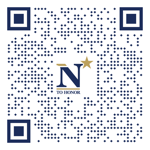
The "category" links below lead to lists of related Honorees; use them to explore further the service and sacrifice of alumni in Memorial Hall.
